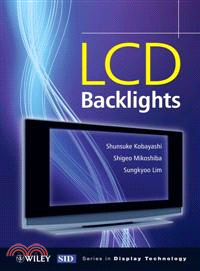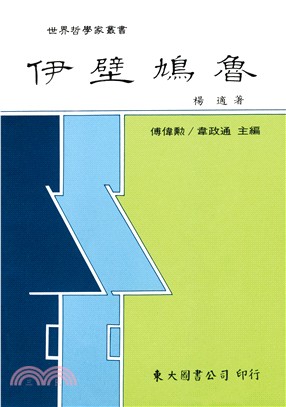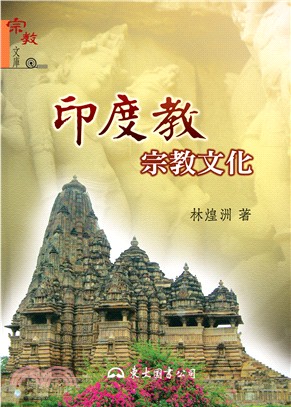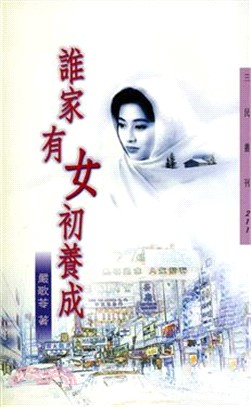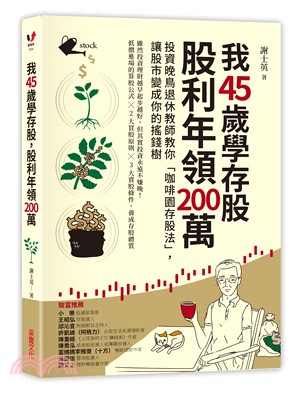商品簡介
LCD Backlights is written by a global panel of leading researchers and practitioners in this field from both academia and industry. The first part of LCD Backlights details the variety of applications of backlights including those in LCD-TV, PC monitors and mobile devices. The second part is a full examination of the different light sources that are used including the latest technological trends in amongst others, cold cathode fluorescent lamps (CCFLs), mercury-free fluorescent lamps and light emitting diodes (LEDs). The final part of the book analyses the optical component of backlights such as diffusers and brightness enhancement films.
Key features:
* Provides a comprehensive analysis of the latest status of LCD backlight research and development.
* Discusses the design considerations and technical requirements for the multiple applications of LCD backlights.
* Considers techniques used for power saving and picture quality improvement.
* Examines the requirements for backlight units used for TVs, PC monitors and mobile phones.
LCD Backlights is of significant interest to practising electronics and display engineers as well as scientists working on the development of liquid crystal displays. This book is also of value to graduate students and researchers involved in display technologies.
The Society for Information Display (SID) is an international society, which has the aim of encouraging the development of all aspects of the field of information display. Complementary to the aims of the society, the Wiley-SID series is intended to explain the latest developments in information display technology at a professional level. The broad scope of the series addresses all facets of information displays from technical aspects through systems and prototypes to standards and ergonomics
作者簡介
Professor Shigeo Mikoshiba, The University of Electro-Communications, Tokyo
Shigeo Mikoshiba received BSc and MSc Degrees from Tokyo Institute of Technology, Tokyo, Japan in 1965 and 1967. Then he moved to Canada and earned Ph.D. Degree from University of Alberta in 1971. After graduation he joined the Department of Physics at the University of British Columbia as a Post Doctoral Fellow. In 1973 he returned to Japan to work for Central Research Laboratory of Hitachi, Ltd. and in 1991 he started his career as a professor at the Department of Electronic Engineering, The University of Electro-Communications, Tokyo. He has published 77 refereed papers and two books in Japanese. In addition he has given many presentations at international conferences and is serving as Associate Editors of Journal of SID and Information Display Magazine.
Professor Sungkyoo Lim, Dankook University
Dr Lim is Professor of Electronics Engineering at Dankook University in Seoul, Korea. He has extensive contacts with display professionals and management in Korea. He is very active in the Society for Information Display at an international level. Dr. Lim earned his Ph.D. in Display Modeling at Oregon State University.
Professor Shunsuke Kobayashi, Tokyo University of Science, Yamaguchi
Dr Shunsuke Kobayashi is Professor of Electronics Engineering at Tokyo University of Science in Yamaguchi Japan.
目次
About the Editors.
List of Contributors.
Preface.
PART ONE BACKLIGHTS BY USE.
1 Technical Trends and Requirements/Specifications for LCD TV Backlights (S. Y. Lee, SAMSUNG Electronics).
1.1 Introduction.
1.2 Structure of LCD TV Backlights.
1.3 Trends in LCD TV Backlights.
1.4 Requirements/Specifications for LCD TV Backlights.
1.5 Conclusions.
References.
2 Improvement of Moving Picture Quality by Means of Backlight Control (T. Yamamoto, Hitachi, Ltd).
2.1 Introduction.
2.2 Blur of Moving Images on LC Displays.
2.3 Methods of Reducing Motion Blur.
2.4 Backlight Blinking.
2.5 Conclusions.
References.
3 Multiple Primary Color Backlights (H. Sugiura, Mitsubishi Electric Corporation).
3.1 Present Status.
3.2 Technological Impacts.
3.3 Operation of Prototype, Six-primary-color Monitor.
3.4 Details of a Six-primary-color Backlight Unit.
3.5 Signal Processing of Transforming from Three Primaries to Six Primaries.
3.6 Color Gamut of the Prototype Monitor.
3.7 Other Techniques for Multiple Primary Color LC-TVs.
3.8 Remaining Issues.
References.
4 Reduction of Backlight Power Consumption of LCD-TVs (T. Shiga, The University of Electro-Communications).
4.1 Introduction.
4.2 Display Method of LCD and Power Reduction.
4.3 Principle of the Adaptive Dimming Technique.
4.4 Adaptive Dimming Control and Power Consumption.
4.5 Other Features of the Adaptive Dimming Technique.
References.
5 Notebook PC/Monitor Backlights (B. H. Hong, Kwangwoon University).
5.1 Introduction.
5.2 Characteristics Required for Backlights.
5.3 Optical Systems for Backlights.
5.4 Light Sources for Backlights.
5.5 Optical Components of Backlights.
References.
6 Backlights for Handheld Data Terminals (S. Aoyama, Omron Corporation).
6.1 Introduction.
6.2 Basic Structure and Principles of LED Backlights.
6.3 Constituents of LED BLUs.
6.4 Various LED Backlight Configurations.
6.5 Conclusions.
References.
PART TWO LIGHT SOURCE DEVICES.
7 CCFL Backlights (K. Yamaguchi, Panasonic Photo & Lighting).
7.1 Introduction.
7.2 Structure and Operating Principle of CCFLs.
7.3 Basic Characteristics of CCFLs.
7.4 Future Trends in CCFLs.
7.5 Conclusions.
8 CCFL Inverters (T. Uematsu, TDK).
8.1 Introduction.
8.2 Various Drive Schemes of CCFL Inverters.
8.3 Equivalent Circuit of CCFLs.
8.4 Inverter Circuits.
8.5 Driving of CCFLs with Inverters.
8.6 Lamp Current Balancers for Driving Multiple Lamps.
8.7 Conclusions.
References.
9 HCFL Backlights (A. A. S. Sluyterman, Philips Lighting).
9.1 HCFL Light Source as a Member of the Fluorescent Lamp Family.
9.2 Introduction of the Hot Cathode in Fluorescent Lamps.
9.3 Driving the HCFL.
9.4 Cathode Life Properties of HCFL.
9.5 Lumen Maintenance and Color Point Shift during Life.
9.6 Designing a Backlight with HCFL.
9.7 The Scanning Feature, Cost-effectively Enabled by HCFL.
9.8 The Dimming Feature.
9.9 Conclusions.
References.
10 EEFL Backlights (J.-H. Ko, Hallym University).
10.1 Introduction.
10.2 Basic Characteristics of EEFLs.
10.3 Advantages and Disadvantages of EEFL Backlights.
10.4 Technological Trends of EEFL Backlights.
10.5 Development Targets.
10.6 Conclusions.
References.
11 FFL Backlights (G. Kim, GLD Co., Ltd. and Mirae Corporation, and S. Lim, Dankook University).
11.1 Introduction.
11.2 The History of FFL Development.
11.3 Characteristics of FFLs.
11.4 Features of the FFL.
References.
12 Magnetically Coupled Electrodeless Lamps (F. Okamoto, Matsushita Electric Works).
12.1 Introduction.
12.2 The Operating Principle of Electrodeless Lamps.
12.3 Environmental Protection.
12.4 Features of Electrodeless Lamps.
12.5 Commercial Products with Electrodeless Lamps.
12.6 Trends in Research and Development.
12.7 Application to LCD Backlights.
12.8 Conclusions.
References.
13 Mercury-free Fluorescent Lamp Backlights (T. Shiga, The University of Electro-Communications).
13.1 Introduction.
13.2 Basic Characteristics of Mercury Discharge.
13.3 Basic Characteristics of Xenon Discharge.
13.4 Mercury-free Xe Discharge Fluorescent Lamps.
13.5 Mercury-free Xe Flat Discharge Lamp.
13.6 Conclusions.
References.
14 LED Backlights (M. Zeiler and J. Hüttner, OSRAM Opto Semiconductors GmbH).
14.1 Introduction.
14.2 LED Device Principle.
14.3 LED Backlight Solutions for Different LCD Sizes.
14.4 Conclusions.
References.
15 Technological Trends of LED Backlight Units (Y. Kondo, NEC LCD Technologies).
15.1 Introduction.
15.2 Structure of LED Backlight Units.
15.3 Design of LED Backlight Units.
15.4 Requirements for Backlight Units.
15.5 Technical Trends of LED Backlights.
15.6 Applications of LED Backlights.
15.7 Conclusions.
16 White OLED Backlights (J. Jang, Kyung Hee University).
16.1 Introduction.
16.2 White OLED with a Single-layer Emission.
16.3 White OLED with Multi-layer Emission.
16.4 WOLED with Color Conversion.
16.5 Stacked WOLED Devices.
16.6 Applications of WOLEDs.
16.7 Research and Development Status.
References.
17 Inorganic EL Backlights (S. Okamoto, NHK Science & Technical Research Laboratories).
17.1 Introduction.
17.2 Classification of Inorganic EL Devices.
17.3 Device Structures and Characteristics.
17.4 High-luminance Inorganic EL Devices.
17.5 Practical Examples of Backlight Use.
References.
18 Field Emission Backlights (M. Ushirozawa, NHK Science & Technical Research Laboratories).
18.1 Introduction.
18.2 Field Electron Emitter.
18.3 Lamp Container and Vacuum Seal.
18.4 Cathodoluminescent Phosphor.
18.5 Issues Relating to Practical Field Emission Backlights.
References.
PART THREE OPTICAL COMPONENTS.
19 Light-guide Plates (Y. Ishiwatari, Asahi Kasei Chemicals).
19.1 Introduction.
19.2 Market Demands for PMMA.
19.3 Characteristics of PMMA.
19.4 Manufacturing Method for PMMA Plates.
19.5 Applications to LCD Backlight Units.
19.6 Characteristics Required for Materials of Light-guide Plates.
19.7 Materials for Extrusion Molding and Injection Molding.
19.8 Conclusions.
References.
20 Optical Diffuser Plates (Y. Ishiwatari, Asahi Kasei Chemicals).
20.1 Introduction.
20.2 PMMA Light Diffuser Plates.
20.3 MS and PS Light Diffuser Plates.
20.4 Trends in Light Diffuser Plates.
20.5 LED Light Sources and Diffusing Plates.
21 Lens Films and Reflective Polarization Films (F. Hanzawa, Sumitomo 3M).
21.1 Introduction.
21.2 Fundamentals of Reflection and Refraction.
21.3 Lens Films (Upward Direction).
21.4 Lens Films (Downward Direction).
21.5 Reflective Polarization Films.
21.6 Resin-type Specular Reflection Films.
21.7 Applications of Films.
21.8 Standards.
References.
Index.
主題書展
更多書展本週66折
您曾經瀏覽過的商品
購物須知
外文書商品之書封,為出版社提供之樣本。實際出貨商品,以出版社所提供之現有版本為主。部份書籍,因出版社供應狀況特殊,匯率將依實際狀況做調整。
無庫存之商品,在您完成訂單程序之後,將以空運的方式為你下單調貨。為了縮短等待的時間,建議您將外文書與其他商品分開下單,以獲得最快的取貨速度,平均調貨時間為1~2個月。
為了保護您的權益,「三民網路書店」提供會員七日商品鑑賞期(收到商品為起始日)。
若要辦理退貨,請在商品鑑賞期內寄回,且商品必須是全新狀態與完整包裝(商品、附件、發票、隨貨贈品等)否則恕不接受退貨。




